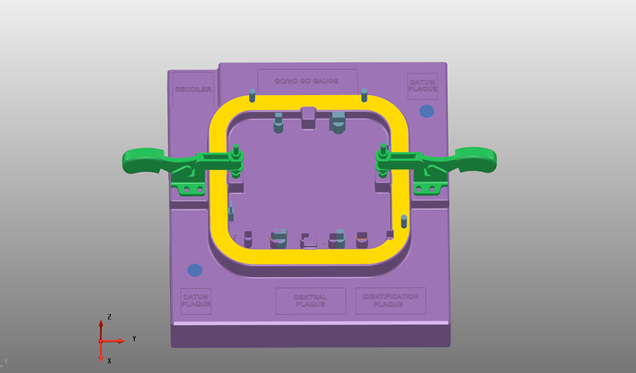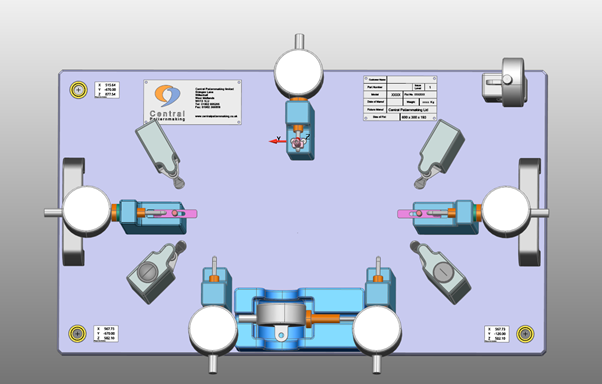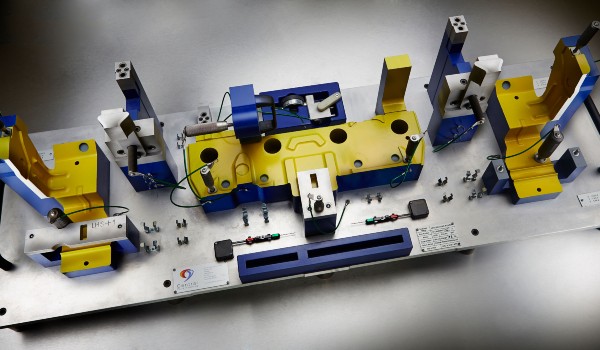“How much does a checking fixture cost?” Sometimes simple questions have complicated answers. When it comes to checking fixtures, there are a number of criteria that need to be established before an accurate cost can be calculated.
So where should you start?
At Central Patternmaking we manufacture bespoke tooling solutions and have brainstormed some points for consideration. Use this as a handy guide to help you with enquiries, to further understand a quote you’ve been given, or just to show suppliers that you know your stuff!
With all that in mind, here are some factors to consider that can affect the cost of your checking fixture, before we talk about specifically about prices…
Dimensions & Complexity of Form
In most cases, the larger the component, the larger the fixture required to hold the component. Complexity of component will also be a major factor in the design of the fixture required. More complex forms will, naturally, require more costly fixture designs.
Material of Component & Product Lifespan
Steel pressings, plastic mouldings, aluminium castings and fabrications are just a few of the products that may require quality inspection. The component material and lifespan of the product tend to guide the selection of what material the main body of the fixture is manufactured from, i.e. tooling board for softer materials, aluminium or steel for harder materials and long lifespan of product.
Component Position during Inspection
The majority of customers will indicate areas of the component they wish to be identified as datum positions. This could be holes, slots or features on the component that can be located on the fixture to ensure that each individual part is positioned from the same points.
RPS points are used as a reference from design concept through to manufacture and inspection of completed components. These are identified and lock a part in six axes which creates a perfectly controlled alignment.
You may also request that the component be inspected “In Car Line” which requires the part to be positioned in the same plane as it is situated in the vehicle. This may require towers to be included in the fixture design to hold the component in position.
Type of Inspection Required
There are a wide variety of inspection procedures that are available to you.
Simple fixtures may only require a site line around the component. This can be achieved by machining the main body of the fixture to the dimensions of the component or engraving the line of the component on the fixture which enables an operator to site check. These lines may be colour coded and include dimension labelling. External Go/No Go and/or wand gauges may be required and positioned on the fixture for operator access.
DTI’s (dial test indicators) or force gauge points may be requested for areas to be inspected on single components or assemblies.
Gap & Flush checks may also be required, which means that the component form is replicated at a set distance below the form and a plug gauge (wand) is used to check uniformity. These tend to be used beside the machine for checking of parts during manufacture.
CMM (Coordinate measuring machine) or scanning devices may be used for inspecting the finished products. The design of the fixture must allow for access of the probe or scanning device around the areas to be checked.
Communicating With Your Supplier
To ensure that your fixture delivers everything you’ve requested, maintaining open communication with your supplier is key.
The manufacturer of the fixture should discuss all relevant points prior to quotation, which may include sketches of the proposed design. If your supplier hasn’t broken down their costs in their quotation, make sure you ask them to. That way, you can compare like-for-like offers.
Additionally, you can also request that the initial design of the fixture is supplied in CAD format. This way, you can view the proposed design and involve all departments within your organisation to view, comment and improve as required.
Finally, once your fixture design is signed off and manufactured, make sure you request a full inspection report. This will reassure you that the fixture is within all tolerances.
How Much Will Your Fixture Actually Cost?
There are so many variables that it's impossible to answer this question directly - better to demonstrate what your fixture could cost with a few examples.
Below is a small, simple fixture with sight lines, datum bushes (for CMM inspection) 5 dowel locations, 1 plug gauge and 2 clamping positions:

Costs for these type of fixtures range from £500 to approximately £2,000, depending on dimensions / complexity of form of component, materials used and gauges required.
The next example below demonstrates a typical medium size fixture with taper location pins and CNC form to control the component. Sight lines for outer profile & gap measurements using the wand gauge around the form can be checked .This fixture also includes datum bushes for CMM measurement:

Typical costs for these type of fixtures range from £2,000 to approximately £5,000, again depending on dimensions/ complexity of form of component, materials used and gauges required.
And, finally, this is an example of a larger fixture where the component is controlled using forms slides and clamps. Measurement can be carried out by dial Test indicator positions shown or CMM using datum bushes:

Typical costs for these type of fixtures can exceed £5,000, again depending upon dimensions / complexity of form of component, materials used and gauges required.
Final Thoughts
"It depends" is an unsatisfactory answer, and hopefully this short guide has given you an idea of the kinds of questions you can raise with your supplier, some points you can compare across quotes, or, at least, some insight into how the cost of your checking fixture will be calculated. Applying this knowledge will ensure you get the best deal for your fixture, with the best fitting supplier for your needs.
If you'd like to discuss your RFQ or any part of your checking fixture project, then we’d love to hear from you. Let us know you'd like to talk by requesting a call back.
Want to learn more? Why not check out another one of our blogs? You might enjoy reading Are you making any of these checking fixture buying mistakes? or 10 Great Questions To Ask Your Potential Checking Fixture Supplier.
You can learn more about how you can save both time and money procuring your next checking fixture by reading our free guide Buying Checking Fixtures Better.
For more content like this, you can also follow us on LinkedIn by clicking the button below.


